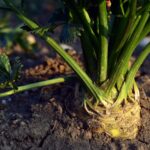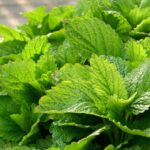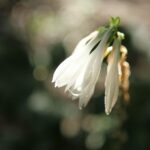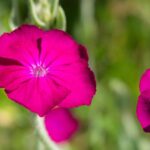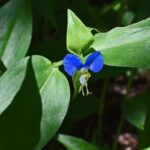The grey-leaved cotoneaster, scientifically known as Cotoneaster glaucophyllus, is a truly rewarding and versatile ornamental shrub that can become a jewel of our garden with proper care. However, for the plant to be healthy, have dense foliage, and produce abundant fruit, professional pruning and occasional cutting back are essential. Many people are hesitant to use pruning shears, even though a well-timed and correctly executed intervention can not only shape the shrub but also stimulate flowering and fruit yield. In the following, I will detail how and when these important horticultural tasks should be performed so that the grey-leaved cotoneaster can be at its best. With this knowledge, anyone can confidently undertake the task and enjoy the sight of a beautiful, well-kept plant.
The fundamental purpose of pruning is to direct the plant’s energy to the right places, thereby promoting healthy growth and a decorative appearance. In the case of the grey-leaved cotoneaster, the intervention has several functions: on the one hand, we remove dead, diseased, or damaged branches that can be sources of infection, and on the other hand, we control the size and density of the bush. An unkempt, overly dense bush does not allow enough light and air to penetrate its interior, leading to yellowing leaves, a lack of flowering, and the appearance of fungal diseases. Therefore, regular pruning is not just an aesthetic issue but also an important part of plant protection.
It is important to distinguish between maintenance pruning and rejuvenation pruning, as the purpose and timing of the two interventions differ. Maintenance pruning is a gentler, annual procedure, while rejuvenation pruning is used less frequently, usually every 3-5 years, to renew old, leggy bushes. The grey-leaved cotoneaster tolerates pruning well, so there is no need to fear harming it as long as the basic rules are followed. Mastering the correct technique ensures that the intervention truly benefits the plant and contributes to its long-term health and beauty.
Always use clean and sharp tools for pruning to ensure that the cut surfaces are smooth and not jagged, thus reducing the risk of infection. A good quality pair of pruning shears is part of the basic equipment, and for thicker branches, loppers or a saw may be necessary. Wear gloves during the work to protect your hands from injuries and plant sap. Careful preparation and the use of the right tools are just as important as the pruning technique itself, as together they ensure successful and safe work.
The ideal time and basic principles of pruning
The most suitable time for pruning the grey-leaved cotoneaster is late winter or early spring, after the frosts have passed but before the buds break. During this period, the plant is in a dormant state, so the stress caused by pruning is minimal, and the wounds heal faster with the onset of the growing season. Pruning performed at this time stimulates the growth of new shoots, resulting in a denser, more compact bush shape. It is important not to carry out the intervention too early, during hard frosts, because the fresh cut surfaces can easily suffer frost damage.
More articles on this topic
The first and most important step in pruning is to remove diseased, damaged, or dead branches. Cut these branches back to the healthy part, or to the base if necessary, making sure not to leave a stub. By removing the diseased parts, you can prevent the spread of pathogens to other parts of the plant. After this, examine the structure of the bush and also remove any inward-growing, crossing, or rubbing branches, as these impede proper air circulation and light penetration, and can cause injuries to each other.
The goal of formative pruning is to create an airy, well-proportioned crown. The natural growth habit of the grey-leaved cotoneaster is arching and spreading, and it is worth respecting this and emphasizing this form with pruning. Feel free to cut back shoots that have grown too long and stick out of the bush’s silhouette to the desired length, always cutting above an outward-facing bud or side branch. With this technique, you encourage the plant to grow outwards, so the interior of the bush will not become too dense.
The intensity of the pruning depends on the age and condition of the plant. For a young shrub, a light formative pruning is usually sufficient, while an older, neglected bush may require a more vigorous intervention. As a rule of thumb, never remove more than one-third of the foliage at a time, as this would put too much stress on the plant. Following the principle of gradualness, you can spread a more drastic cutting back over two years, giving the plant time to regenerate and produce new, strong shoots between interventions.
The technique of rejuvenation pruning
For grey-leaved cotoneaster bushes that have become old, leggy, and flower sparsely over time, rejuvenation pruning can be the solution. This more drastic intervention aims to stimulate the plant to produce new, vigorous shoots from near the root collar, thereby completely renewing the shrub. Rejuvenation pruning should also be done during the dormant period, in late winter or early spring, when the nutrients stored in the plant can support new growth. This process restores the vitality and ornamental value of the bush.
More articles on this topic
During rejuvenation pruning, cut back all branches to a height of about 15-20 centimeters above ground level. Although this may seem daunting at first, the grey-leaved cotoneaster responds extremely well to this intervention and will produce strong new shoots from the base. Use a sharp pruning saw for the thicker branches and ensure clean cut surfaces. After the drastic cutting back, the plant will need more energy to regenerate, so ensure adequate nutrient supply and regular watering during the growing season.
Another, gentler method of complete rejuvenation is gradual renewal, carried out over 2-3 years. In the first year, cut out one-third of the old, aged branches from the base, in the second year, half of the remaining old branches, and in the third year, remove the last remaining old branches. With this method, the bush continuously retains part of its foliage, so the intervention is less shocking to the plant, and a large, bare patch is not created in the garden. This technique is particularly recommended if the shrub is an important visual element of the garden.
After rejuvenation pruning, leave the strongest and best-positioned new shoots to form the future framework branches of the bush. Remove the weaker, poorly directed shoots during the next spring pruning. This selection process will ensure the development of a strong, well-structured, and airy bush that will once again flower and fruit abundantly in the coming years. Careful follow-up work is just as important as the cutting back itself.
Special considerations and common mistakes
Although the grey-leaved cotoneaster is generally a low-maintenance plant, it is worth considering a few special aspects during pruning to achieve the best results. If you are growing the shrub as a hedge, the pruning technique differs slightly from that for bushes planted as solitary specimens. For a hedge, the goal is to create a dense, closed surface, so you can prune it up to twice a year: once in early spring, and then a second, corrective pruning in mid-summer. Make sure that the base of the hedge is always wider than the top so that the lower parts also receive enough light.
A common mistake many people make is pruning too timidly, only snipping off the tips of the branches. This practice results in dense, broom-like shoot growth at the branch ends, while the interior of the bush becomes leggy and dense. Do not be afraid to cut back the shoots more boldly and to thin out the crown, as the plant will reward this with abundant new growth. Another typical problem is poor timing; summer or autumn pruning can remove flower buds and berries, reducing the plant’s ornamental value, and the new shoots that form at this time would not have time to mature before winter sets in.
It is important to know that the flowers and fruits of the grey-leaved cotoneaster develop on the previous year’s shoots and the short side shoots growing from them. This fact must be taken into account during pruning, especially if the goal is an abundant fruit yield. Excessive spring cutting back can remove a significant portion of the shoots that are ready to flower. Therefore, during maintenance pruning, focus primarily on thinning and shaping, and only shorten the shoots to the necessary extent.
Finally, do not forget about post-pruning care, which is crucial for the plant’s rapid recovery. After pruning, it is advisable to cover the base of the shrub with mulch (e.g., compost or bark), which helps to retain soil moisture and provides nutrients. In the spring, applying a balanced, complex fertilizer is also beneficial, giving the plant extra energy to form new shoots and flowers. This care will bear fruit in the form of a healthy, splendid cotoneaster.








